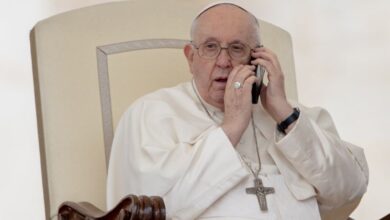Is Edith Stein a doctor of the Church? No, but she could be one soon

 St. Teresa Benedicta of the Cross (Edith Stein), pictured in 1938-1939. / Credit: Public Domain
St. Teresa Benedicta of the Cross (Edith Stein), pictured in 1938-1939. / Credit: Public Domain CNA Staff, Aug 9, 2024 / 06:00 am (CNA).
Aug. 9 is the feast day of St. Teresa Benedicta of the Cross, also known as Edith Stein. A convert from Judaism at the age of 30, she later entered the Carmelite order and died in the Nazi concentration camp at Auschwitz in 1942.
St. Teresa Benedicta was a scholar and an intellectual who earned a doctorate before her conversion, which, after years of interest in Christianity, came to fruition after she read the autobiography of St. Teresa of Ávila. She taught at a university before entering the Carmelites and continued to study and teach, completing before her death a study of St. John of the Cross titled “The Science of the Cross.”
Pope John Paul II canonized her in 1998 and proclaimed her a co-patroness of Europe the following year.
St. Teresa Benedicta is not yet a doctor of the Church, but there’s an effort underway right now to name her as one. Her order, the Discalced Carmelites, put in an official request to the Vatican in April and has proposed for her the title “doctor veritatis” (“doctor of truth”) because of her relentless intellectual pursuit of truth in Jesus Christ. (The co-founder of the Discalced Carmelites, St. John of the Cross, is also a doctor of the Church, as is the saint who had such a profound influence on Stein, St. Teresa of Ávila.)
If St. Teresa Benedicta is named a doctor of the Church, she would join 37 other saints with that title, four of whom are women: St. Teresa of Ávila, St. Catherine of Siena, St. Thérèse of the Child Jesus, and St. Hildegard of Bingen. She would also be the second doctor of the Church to be a martyr, after St. Irenaeus of Lyon.
(Also, if St. Teresa Benedicta were named a doctor of the Church, it would mean that three of the five female doctors would have essentially the same first name.)
What is a doctor of the Church?
The title “doctor of the Church” recognizes those canonized men and women who possessed profound knowledge, were superb teachers, and contributed significantly to the Church’s theology.
Traditionally, the title of doctor of the Church has been granted on the basis of three requirements: the manifest holiness of a candidate affirmed by his or her canonization as a saint; the person’s eminence in doctrine demonstrated by the leaving behind of a body of teachings that made significant and lasting contributions to the life of the Church; and a formal declaration by the Church, usually by a pope.
The list of more than three dozen doctors of the Church includes some of the most well-known and revered Catholic saints, including St. Augustine, St. Jerome, St. Anthony of Padua, St. Francis de Sales, and St. Thomas Aquinas.
Not quite half of the saints revered as doctors in the Catholic Church are also honored in the Orthodox church since they lived before the Great Schism in 1054.
The most recent doctor of the Church to be named was St. Irenaeus of Lyon, with the title “doctor unitatis” (“doctor of unity”), in 2022. Pope Francis had previously in 2015 named as a doctor of the Church St. Gregory of Narek, a 10th-century priest, monk, mystic, and poet beloved among Armenian Christians.
Among Catholics who lived in modern times, there have been calls for St. John Paul II, St. John Henry Newman, and Pope Benedict XVI to be named doctors of the Church — though the late Pope Benedict’s sainthood cause has not yet been opened.





